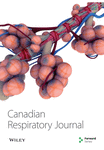The Respiratory Presentation of Severe Combined Immunodeficiency in Two Mennonite Children at a Tertiary Centre Highlighting the Importance of Recognizing This Pediatric Emergency
Abstract
Severe combined immunodeficiency (SCID) is considered to be a pediatric emergency, with respiratory distress being the most common presenting symptom. The authors present two cases of SCID in children <4 months of age with respiratory distress at a tertiary care centre due to a recently described homozygous CD3 delta mutation found only in the Mexican Mennonite population. Failure to respond to broad-spectrum antibiotics prompted investigation for possible SCID. Bronchial alveolar lavage fluid from both patients grew Pneumocystis jiroveci, and flow cytometry revealed absent T cells. The CD3 delta gene is believed to be important in T cell differentiation and maturation. The present article reminds pediatricians and pediatric respirologists that the key to diagnosing SCID is to have a high index of suspicion if there is poor response to conventional therapies.




